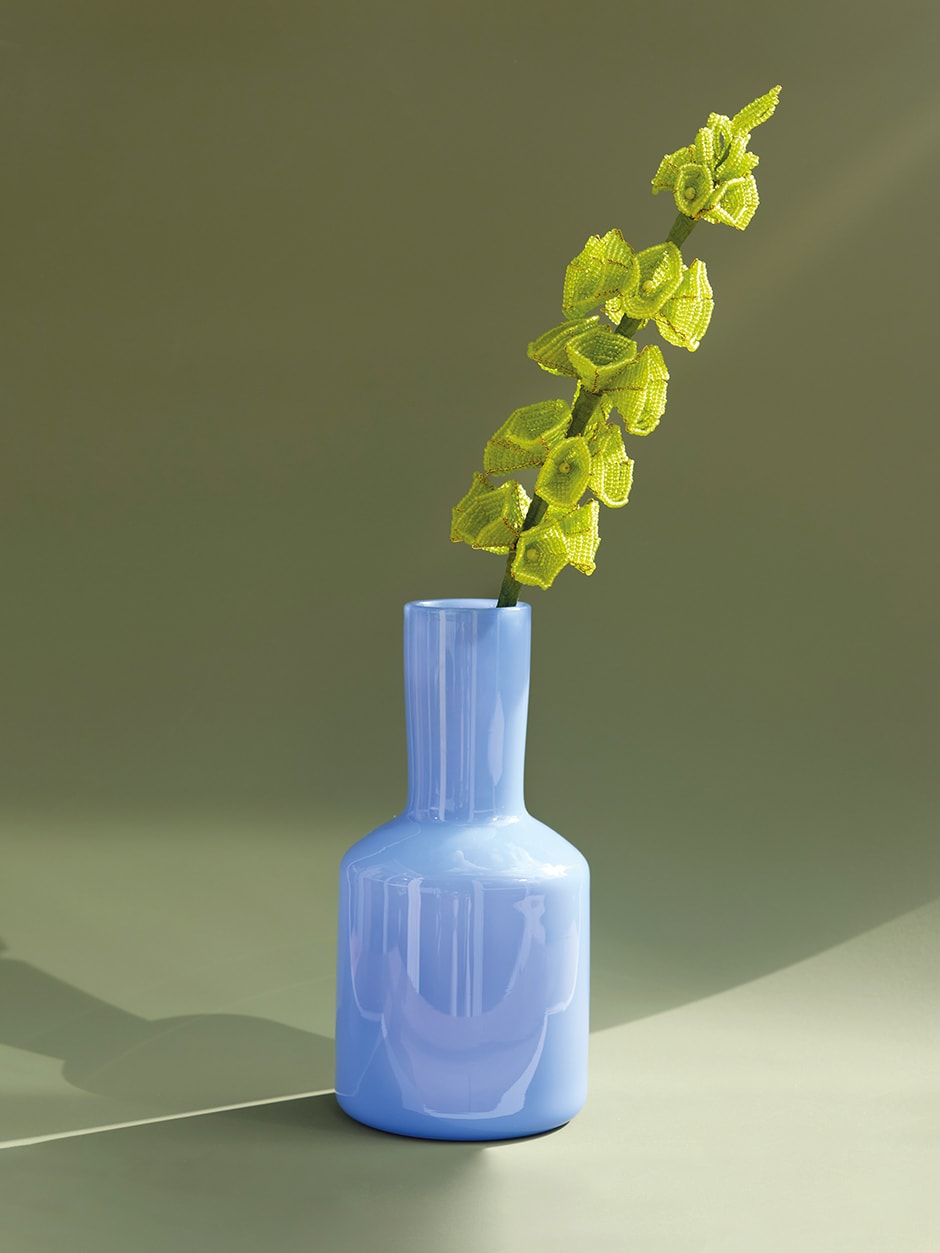Lucky you — this extended chat with Hollie includes some of the conversation we weren’t able to fit into our print feature.
Hollie, beading flowers is a delightful niche art — what drew you to it? I have a huge love of flowers, then one night last year, I was down an internet rabbit hole reading an article about funeral practices in Edwardian and Victorian times — my Google history is embarrassing! — and found a mention of the lost art of beading flowers as grave ornaments. Women in 18th- and early 19th-century France and Western Europe would weave elaborate wreaths for fallen loved ones, often out of necessity when war, weather and a lack of resources meant fresh flowers weren’t available. The wreaths would disintegrate over time and the beads would be picked up and used again and again. The idea of people innovating in hard times to create something heartfelt and purely for decorative purposes really appealed to me while we were in the thick of the pandemic, so now I’m on a mission to revive the practice.


Is it part of a wider creative career for you? My entire life has been a creative practice in some ways. I come from a big family of artistic characters, in which pursuing creativity and experimentation with visual arts and music was almost mandatory. My grandmother was a ceramicist and taught me every handcraft imaginable. This was such a wonderful gift and I can’t remember a time when I was without a creative project on the side — in fact, when I moved to London in 2015, I packed more art supplies than clothing!
In 2018, I started making and selling jewellery as Hark Handmade in my spare time, which led to three years tutoring at Auckland’s Studio One Toi Tū. I also work in the architectural- and interior-design-product industry full-time. Although Hark is a side piece for now, it feels so right being able to use jewellery-making techniques to create decorative objects for the home, so I’m leaning into it fully and wish I had an extra pair of arms to bead quickly enough to realise all my ideas.

Where do you find inspiration? It comes from far and wide. My interpretation of beaded flowers is a lot lighter than their historical use in mourning, but that weird history really inspires me. I’m really inspired by the work of some great New Zealand floral artists, such as Georgie Malyon of Greenpoint Florist, and Isabel Johnston and Lydia Reusser of Isadia. The global shift in contemporary floral design towards ikebana-style and flowers as sculpture is absolutely divine to me. I love art and interior design and have a huge scrapbook stuffed full of magazine and book pages and print-outs from the internet, and I go back to these constantly to get colour inspiration.
What reference material do you use to create your works — real flowers or imagery? Both! I have a great collection of botanical reference books, mostly from op shops, and some beautiful photography books that are endlessly inspirational. My current favourites are Flowers For Friends by Julia Atkinson-Dunn and Rosa, a stunning book of rose explosions by florist Simone Gooch and photographer Derek Henderson. I also can’t do without real flowers — although unfortunately I sometimes need to pull them to bits to study their shapes and count all the petals.

Can you share a little bit about your making process? Starting a new piece for the first time is thrilling. I study each plant and make lists of all its parts, then I experiment with ways of weaving the beads together to create the right forms. It can take many tries to convey the lightness and movement or fullness and density of a plant. When I’m confident I’ve worked out the dimensions and settled on the technique I’ll use to make each component, I’ll choose the beads.
I like to work with Japanese and Czech seed beads for the huge range of colours and finishes available. Taking time to choose the right beads helps create realism. For instance, I use matte beads for velvety roses or transparent beads to create the appearance of the sun shining through a sheer petal. Some flowers have many separate parts, which can take days to make. It’s a wonderful, meditative process creating piles of petals in all different sizes, and I love the rhythm of counting beads and twisting wire. Eventually, I bind everything together on a stem wire to complete a finished flower or branch. The entire time I take photos and write notes so I can recreate each plant again one day.

Are there certain forms and colours you enjoy working with? I love rounded forms and meandering twisted curves. I’ve got endless ideas for installations and larger-scale sculptures, so watch this space!
How do you imagine people displaying your creations? My favourite way to display them is wall-mounted with an invisible clip. I’m currently prototyping some interesting wall-mounting fixtures to allow people to suspend them as art pieces, instead of in vases, but I think they bring joy wherever you put them.
harkhandmade.com
Interview Alice Lines
Photography Lula Cucchiara

